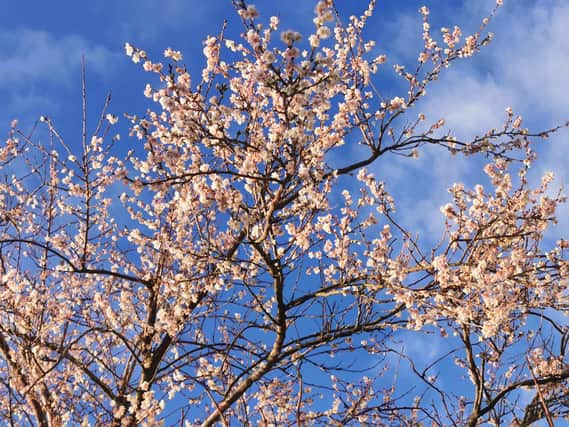GARDENING: Tasks done now will help spring growth


So, we can be found outdoors in the absence of precipitation, complete with snood, wool hat, gloves, and thermals. Key tasks completed now will free up precious time when spring bursts into growth.
It's amazing what can be achieved in a one-hour session, by two enthusiastic gardeners with a planned agenda. And if the going gets tough the relative warmth of a greenhouse is never too far away. Last week the lady of the house continued with the winter pruning of ornamental shrubs whilst I started on the apples and grape vines.
Advertisement
Hide AdAdvertisement
Hide AdWeigela, escallonia and Spiraea billiardii (pink spikes of bloom), put on lots of growth annually, and this is the ideal time to prune and propagate using the removed stems as hardwood cuttings. Our hardy fuchsias are also vigorous, some reaching between one to two metres, so they`re pruned almost to ground level – a task the lady appears to enjoy.
There are still some roses to prune. They include a climbing `New Dawn,` two shrubby `Cecile Brunner` and a sweetbriar, but this is one job not to be rushed because they each possess rather sharp thorns. Hydrangea pruning is left until the sun radiates more warmth because
last year`s remaining growth and blooms afford a degree of frost protection for the embryo flower buds. It also pays to leave sub-shrubby plants such as lavender until spring growth emerges and indicates how far we can cut back. Our apples are trained to produce fruit on spurs. These are reduced side shoots that emerge from leading branches. Pruning comes in two stages. The first in midsummer when lateral growths that would otherwise continue at the
expense of developing fruits, are shortened to fifteen centimetres. In winter these are reduced again to a small group of plump fruit buds.
Advertisement
Hide AdAdvertisement
Hide AdRespite from the cold can be found in the greenhouse where various items need attention. The washing down, disinfecting and cleaning of benches, glass, pots and trays sets us up for the year ahead, but first the vines need pruning. All lateral stems emanating from the main rods are reduced to mere stubs with one or two buds. For a few weeks, our vines resemble the human
equivalent of the shortest haircut imaginable!
Winter gardening is much more enjoyable when in the presence of inspirational hardy plants that set a benchmark for survival. Last week I stood under a tall autumn cherry that was covered in pink-tinged bloom, highlighted by a shaft of sunlight and patch of blue sky in the background. A breeze carrying sleet came and went in an instant. Then a rainbow started to form. An unbelievable combination of events that will last long in the mind's eye, and the resolve to be out there witnessing such magical moments simply grows stronger.
Several other winter plants are just as tough and attractive as Prunus subhirtella `Autumnalis Rosea` which comes in bush or standard form. Ground-hugging winter heathers (Erica carnea) have long enjoyed the freedom of this garden because they offer so much. We have them principally for the mass of white, pink, and red blooms that last from December to April, and they`re a boon to bees out foraging early in the year. They certainly suppress weed growth and if trodden on by mistake, simply bounce back into shape. The viburnums earn their place too. Not only `Dawn` which, leafless in winter, carries those stunningly fragrant clusters of pink bloom from November to April, but also two useful versions of V. tinus. Both have white, scentless clusters of bloom and are evergreen, encouraging roosting and nesting birds. Best evergreen cultivar is V. tinus `St. Ewe` and the variegated V. `Variegatum` is so pleasing to the eye. Interested? The time is good for planting. There’s a price to pay for not working little and often in the winter garden, and it's not just falling behind with urgent jobs. You miss joyful sights of bulbs emerging and a summer hebe repeat flowering in freezing January conditions!